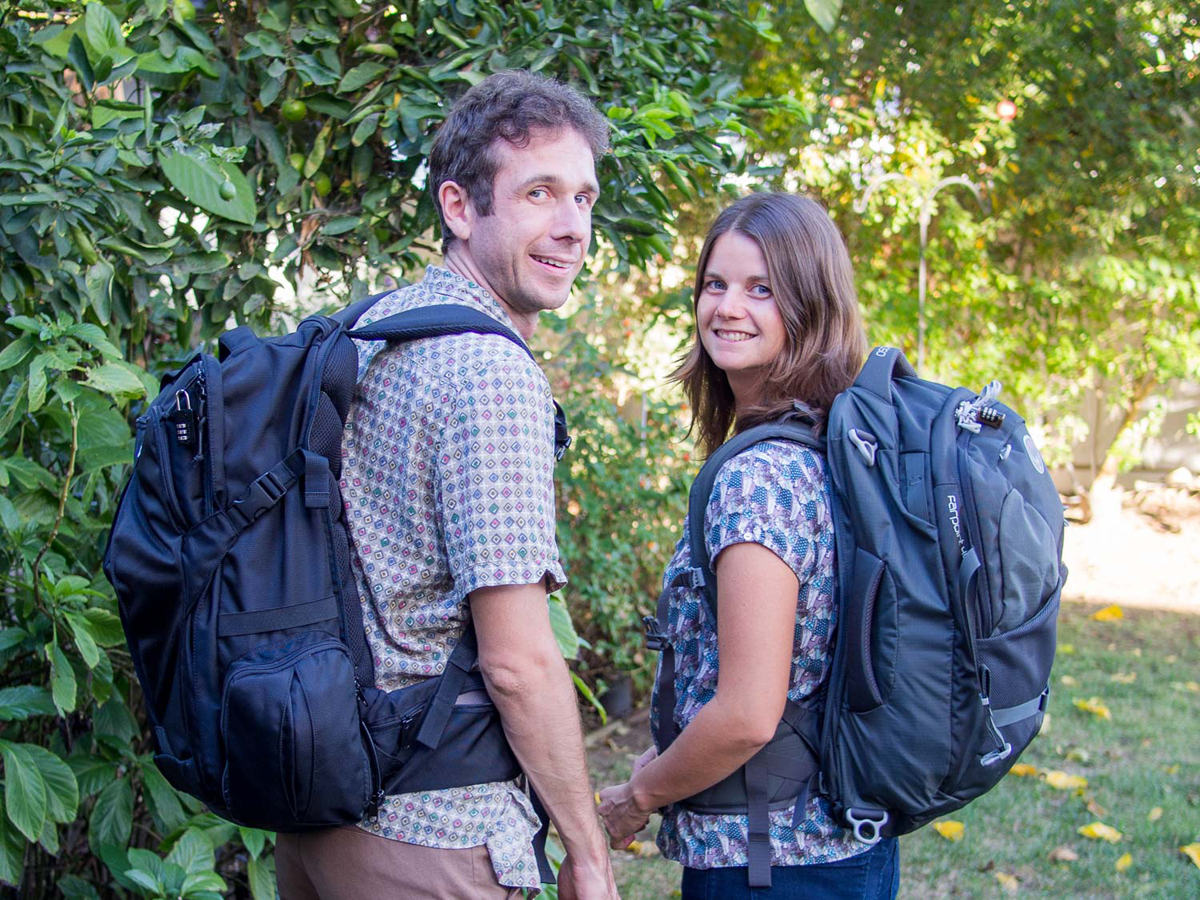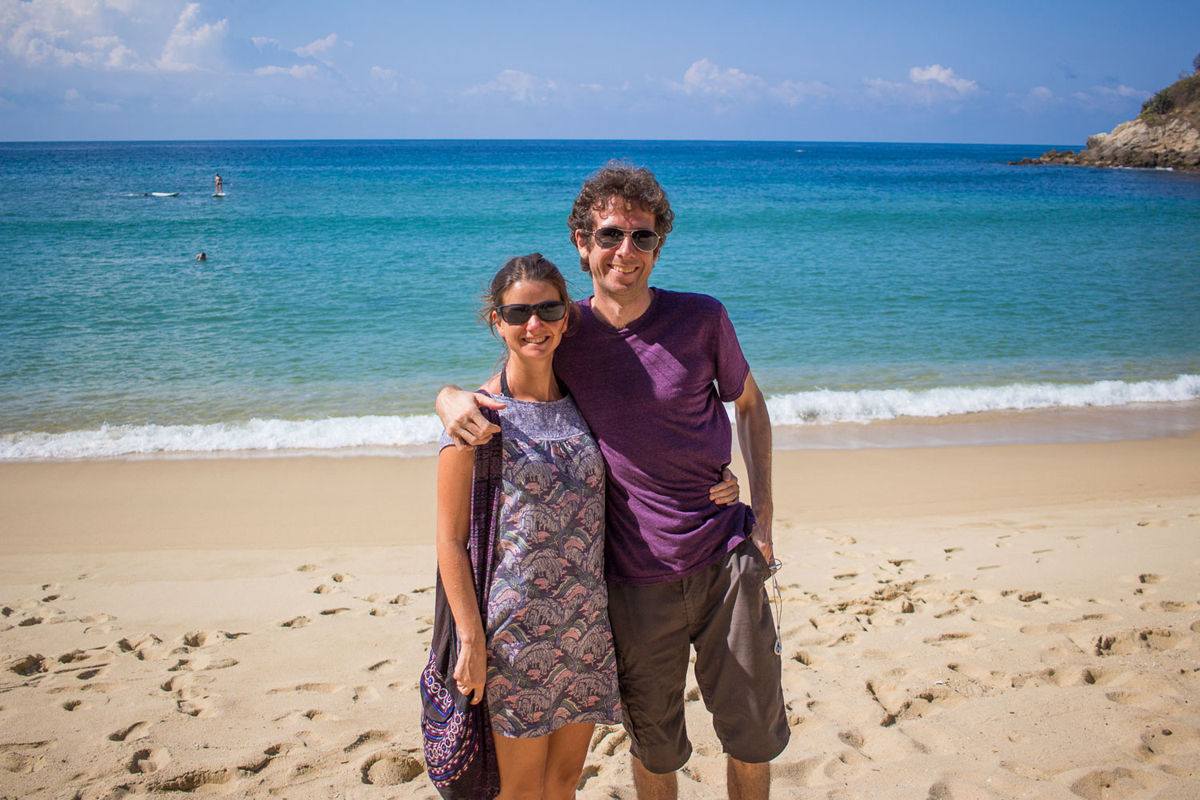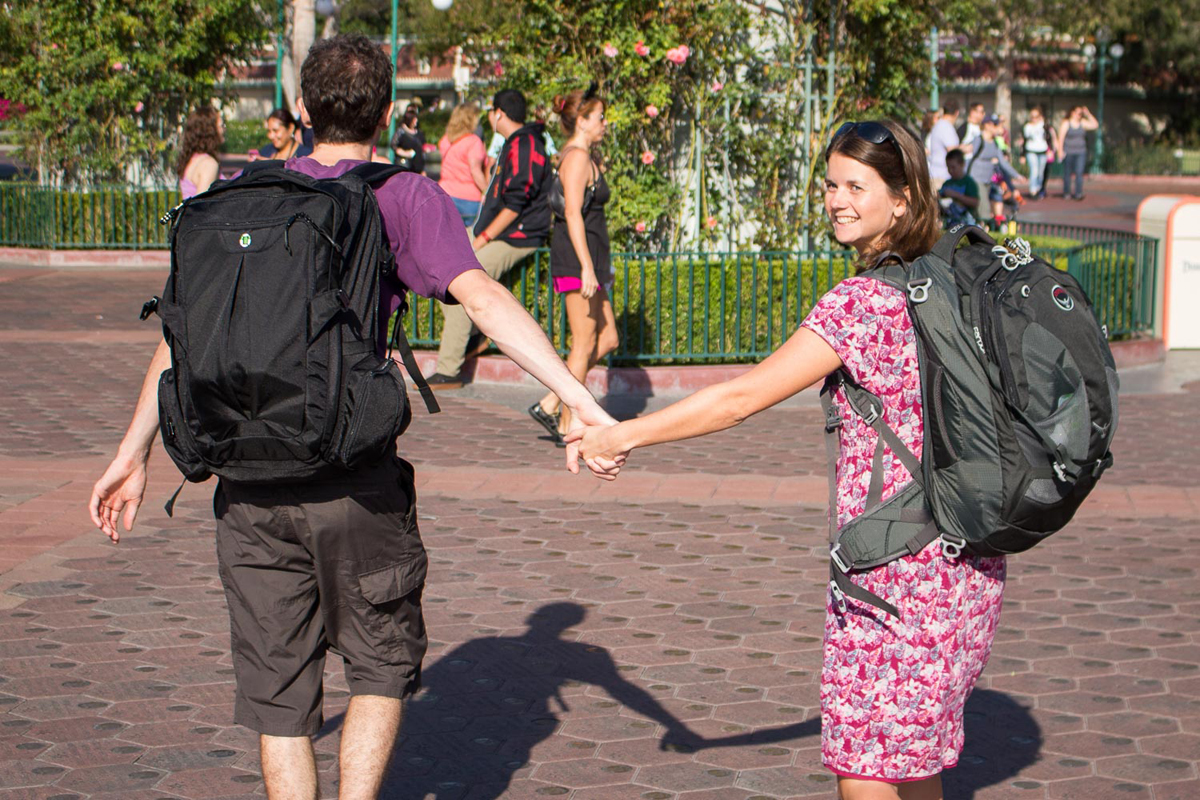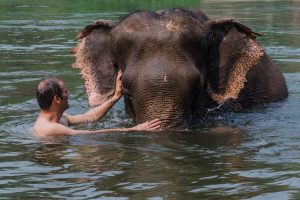When we started planning our long-term journey, we stumbled upon a travel blog that inspired us a lot. A digital nomad couple that travelled light, only with carry-on backpacks! This was something that scared us, but at the same time it was the only way we could imagine our life on the road. Simon & Erin have been our big inspiration and we are very excited to talk with Erin about her new guide to packing light.
Erin McNeaney sold everything she owned and left the UK in 2010 to travel the world with her partner, Simon. Since then she has travelled to over 30 countries with just a carry-on backpack. In her new book, The Carry-On Traveller, she shares her tips for packing light. Erin runs the popular travel blog, Never Ending Voyage, where she writes about slow travel, hunting down the best vegetarian eats, and the ups and downs of digital nomad life.
What made you decide to travel with just carry-on luggage? Can you tell us more about your transition from a big backpack to a small one?
When we decided to travel full-time as digital nomads in 2010, we knew that not having to check luggage would make our travels much easier. We didn’t want to lug around big backpacks and we liked the idea of saving time at airports.
We spent a year travelling around the world in 2008 with 60-litre backpacks, but it wasn’t too difficult to make the transition to smaller bags. Over the years we’ve learnt what we really need, so we could avoid packing anything that wouldn’t be used regularly. We also started using compression bags for our clothes, which allowed us to fit more in our backpacks.

What luggage do you use and why did you choose it?
Simon has the Tortuga backpack and I have the Osprey Farpoint 40.
The features we were looking for were carry-on sized, a neutral colour that didn’t stand out too much, front-opening (not top-loading like hiking backpacks) to make it easy to access our things, durable fabric, laptop sleeve, lockable zippers, and a padded hip belt that takes the weight off our shoulders. The hip belt is the most difficult thing to find in carry-on backpacks, but we find it essential to prevent back pain.
We are really happy with our choices. The Tortuga is 44 litres and is too big for me, but it’s perfect for Simon. The Osprey Farpoint 40 is smaller (the S/M size is 38 litres) and works well for me.
Does carrying so little have an impact on your travel & life mindset?
It has cured our desire to go shopping. We now have no interest in buying new things unless we really need to (with the exception of shiny new Apple products for Simon!). In fact, we don’t like shopping at all now and we avoid it for as long as possible. We’re just not interested in owning things for the sake of it—everything we own has to be used regularly and add value to our lives.
How often do you buy new stuff? Do you recommend any clothing brands or fabrics for packing light?
We replace clothes when they get holes and are looking worn out. We usually replace our cheaper clothes once a year, although some of the quality items we have last for years. Simon loves Bluffs trousers, which look smart but have all the features of travel trousers—lightweight, wrinkle resistant, quick-drying, and hidden zippered pockets. I love Tieks ballet flats, which are comfortable and stylish but fold up small.
For cold weather, merino wool is great as it doesn’t take up much space but is really warm. It also doesn’t smell, so it can be worn longer without washing. We took Icebreaker long-sleeve tops to South America.
What are the advantages and disadvantages of carry-on only travel? Do you think it’s worth it?
There are so many advantages to travelling carry-on only. We save money on checked luggage fees. We save time at airports—if we check in online, we can go straight to security, and when we arrive at our destination, we don’t have to wait for our bags. We don’t have to worry about airlines losing our luggage.
We feel more secure being able to keep all of our stuff with us on buses and trains. We can pack our bags in ten minutes. We can walk around looking for accommodation without our bags weighing us down. Life with less is just simpler. We don’t find that there are any downsides. There’s nothing we want that doesn’t fit in our bags.
Can you recall a moment when you were grateful you had only a backpack with you?
One night in Mexico we needed to go to the bus station to take a night bus. We left our accommodation and headed out towards the main road where we assumed we could catch a taxi. There were plenty of taxis around but, unfortunately, they were all full, so we kept on walking.
We ended up walking a few miles all the way to the bus station as we never found a taxi. With lots of luggage it would have been stressful, but the walk wasn’t a problem with our small backpacks. Whenever we catch a bus, we’re also grateful we have carry-on bags from a security point of view.
We feel much safer keeping our backpacks by our feet rather than putting them under or on top of the bus where anyone could access them. Plus when we arrive, we head straight off rather than waiting for the luggage compartment to be opened and everyone else’s bags taken out.

What about souvenirs? Do you buy them?
When we travelled around the world in 2008, we did buy souvenirs and posted them home. But when we got back, after living out of a backpack for a year, we realised how little we needed. This was the start of our minimalism journey which led to us selling almost everything we owned to travel. We just have no interest in souvenirs now. Experiences (and photos of them) are more important to us than things.
What are your pro tips on packing light?
However long your trip is, only pack enough clothes for a week and then do laundry. Make sure that all your clothes go together (all bottoms with all tops) so that you can mix and match to create more outfits. Use packing cubes or compression bags (I like Eagle Creek Spectre compression packing cubes) to keep things organised and save space.
What tools and apps do you use to work on the road?
We use Backblaze to back up everything on our laptops in the cloud. Simon uses the apps Byword and Procreate Pocket to make notes and sketches on his iPhone, which has replaced his Moleskine notebook. The Duet Display app turns his iPad into a second monitor for extra screen space.
He also uses Astropad, which turns the iPad Pro into a Cintiq graphics tablet. He can have the power of desktop Photoshop or Illustrator with the pressure and tilt sensitivity of the Apple Pencil, and he doesn’t have to carry around a separate graphics tablet.
We also love 1Password for keeping track of our passwords, Scrivener for big writing projects (like my book), and Speedtest to check wifi speeds before committing to accommodation.
Our most used app is one we created. Trail Wallet makes it easy to keep track of our expenses in multiple currencies.
We wrote a list of our 60 favourite resources for digital nomads here.

You’ve just published The Carry-On Traveller guide. What’s the main message of the book and where can people buy it?
The main message is that packing light is the secret to stress-free travel and it’s possible for everyone whatever your circumstances. In the book, I tried to answer every possible question and concern about carry-on only travel. I included stories and advice from a range of travellers from families to fashionistas so that everyone can find tips they relate to.
The Carry-On Traveller is available on Amazon Kindle. Even if you don’t have a Kindle, you can read the book on the free Kindle app that’s available for any laptop, smartphone, or tablet. More formats may be available later in the year.





3 thoughts on “The Carry-On Traveller Guide: Interview with the author Erin McNeaney”
I could stand to learn how to pack lighter … I might just invest some money in this guide!
Definitely, James, the guide is super useful, with lots of practical tips!
Great article. Lots of good information. Thank you for posting.
Comments are closed.